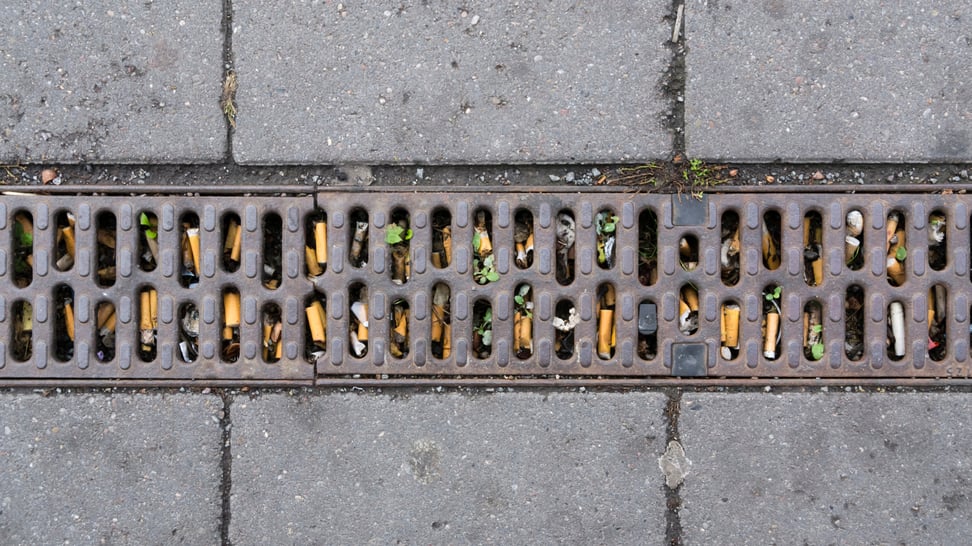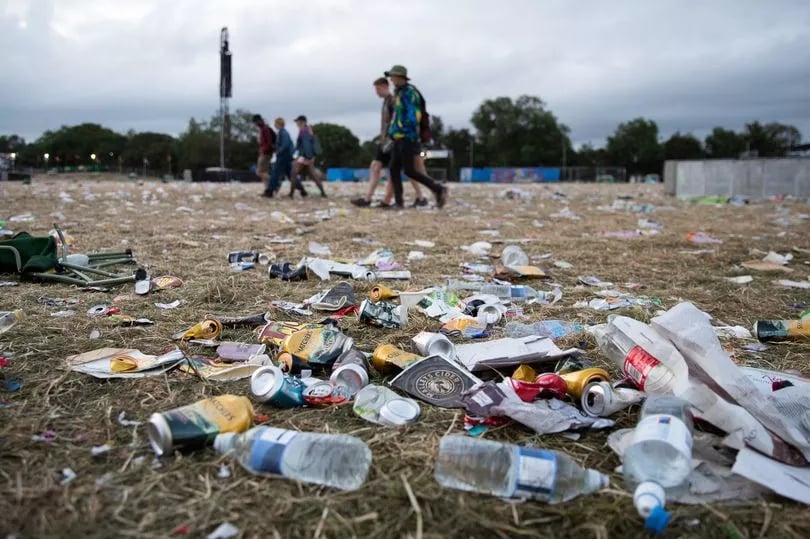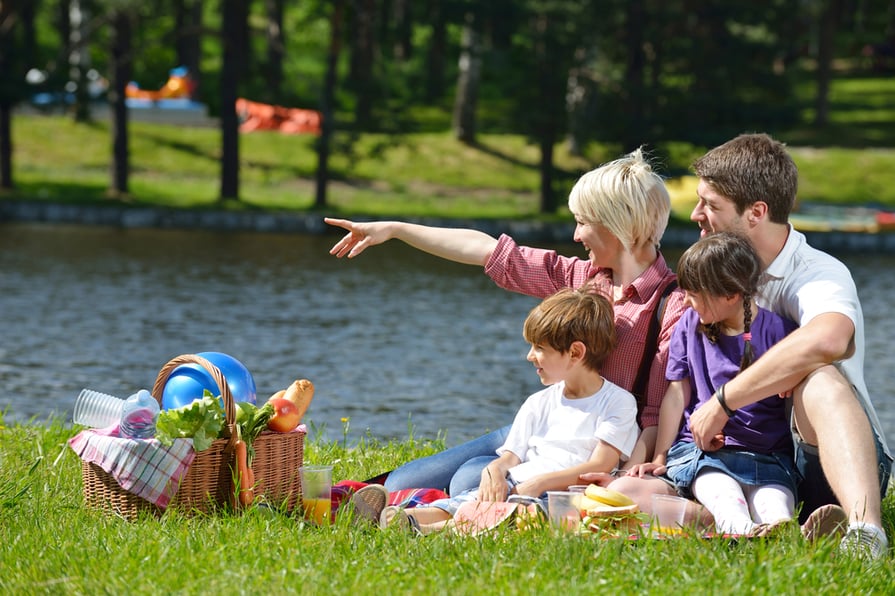Picture this: a crisp, sunny afternoon in a picturesque park, a gentle breeze rustling the leaves, and the tantalizing aroma of food wafting through the air. What could be more quintessentially British than enjoying a delightful alfresco meal? Alfresco dining in the UK has been a cherished tradition for generations, from picnic spreads in the countryside to outdoor cafes in the heart of bustling cities. It's a way to savor the fleeting moments of good weather and soak in the natural beauty that this island has to offer.
As the UK weather notoriously varies from bright and sunny to cool and cloudy, making the most of outdoor dining opportunities is something we all look forward to. Whether it's the iconic Wimbledon picnics, leisurely weekend outings to the beach, or simply enjoying a cup of tea in the garden, alfresco dining is an integral part of British culture. But, there's an important aspect that a lot of people either forget or ignore to this cherished practice – the environmental impact of the packaging we use.In this blog, we're going to delve into the packaging footprint of alfresco dining in the UK. You'll be surprised to learn how the choices we make while enjoying the great outdoors can impact the environment.
The most littered items: The Friendly Foe
While the UK celebrates the joys of alfresco dining, it's equally important to spotlight the most littered items that significantly affect our environment. Over the past three years, the issue of littering has gained considerable attention, and it's essential to address this concern with a professional yet friendly perspective.
In a recent report by Keep Britain Tidy (2022), some troubling facts came to light regarding litter in the UK. Cigarette butts, fast food packaging, and plastic bottles continue to be among the most frequently discarded items, despite our increasing awareness of the environmental consequences. As Alison Ogden-Newton, the CEO of Keep Britain Tidy, puts it, "It's disheartening to see that certain items still persist as environmental challenges."
Cigarette butts, as tiny as they are, top the list of the most littered items. These little culprits release harmful chemicals into the environment, affecting wildlife and soil. Shockingly, there has been a 79% increase in the number of discarded cigarette butts in the past three years.

Fast food packaging is another notable concern. It's often carelessly discarded in public spaces, contributing to the litter woes. According to a 2021 report by The Guardian, "the UK is grappling with takeaway packaging." Alarmingly, there was a 34% surge in littered fast food packaging in just one year, largely due to the rise in home deliveries during lockdowns. Although plastic bottles are increasingly being recycled, they still pose a challenge. The report suggests a 15% increase in plastic bottle litter since 2020, despite numerous campaigns promoting recycling and reducing single-use plastics.
These littered items serve as friendly reminders of the ongoing environmental issues tied to alfresco dining and outdoor activities in the UK. With our collective efforts and a friendly yet professional approach, we can work towards a cleaner and more sustainable future for our cherished outdoor spaces.
Outdoor Events and the Plastic Predicament
When we think of the environmental impact of alfresco dining in the UK, it's essential to consider not just the humble picnic but also large-scale outdoor events like festivals and sports gatherings. These occasions often generate a staggering amount of plastic waste, and over the past three years, the issue has drawn increased scrutiny.
Wimbledon, a quintessential British tradition, exemplifies this challenge. Over the past three years, this prestigious tennis event, along with many others, has been under scrutiny for the colossal amount of plastic waste it generates. While Wimbledon made commendable efforts to reduce single-use plastic containers, it remains emblematic of a much larger problem that extends to various outdoor events across the country. The use of single-use plastics, from water bottles to food containers, has become deeply ingrained in the fabric of these gatherings, posing a significant environmental threat.
In the realm of music festivals, Glastonbury, one of the UK's largest and most iconic gatherings, has grappled with a considerable packaging footprint. In 2019, an estimated 1.3 million plastic bottles were consumed at the festival. To put this into perspective, that's the equivalent of filling over 20 Olympic-sized swimming pools with plastic waste. These staggering numbers emphasize the extent of the challenge these events face and the urgency of addressing it.

In addition to music festivals, sporting events have also found themselves grappling with significant plastic waste issues. Football matches, marathons, and cycling races, while being great sources of entertainment and physical activity, also generate substantial amounts of plastic waste. Consider the London Marathon, which has seen a notable increase in discarded plastic bottles in recent years. This serves as a stark reminder that even in the context of highly-regarded, organized events, convenience often takes precedence over sustainability.
The takeaway here is that the issue of plastic waste isn't limited to a single event or location. It's a problem that affects a wide spectrum of festivities and gatherings, both large and small, which bring people together to celebrate, enjoy sports, or simply have a good time. By advocating for eco-friendly alternatives, increasing awareness, and making informed choices, we can collectively tackle the plastic waste generated by these events, ensuring the preservation of the natural beauty of our beloved outdoor spaces.
Picnics and Plastic Pollution
Picnics, those delightful outdoor feasts, have been an integral part of British culture. However, the charm of picnicking comes with a growing concern - the increasing plastic pollution stemming from these outings. Over the past three years, this issue has garnered attention, revealing some disheartening facts and figures. When we unpack the typical picnic scene, it's not uncommon to see a plethora of plastic items left behind. Disposable plates, cups, cutlery, food packaging, and single-use condiment sachets are some of the common culprits. In 2021, the UK used over 4.8 billion plastic plates and nearly 3 billion plastic cutlery items, according to data from the Waste and Resources Action Programme (WRAP).
One of the most striking examples of plastic waste from picnics is the ubiquitous plastic water bottle. In 2022, The Telegraph reported a surge in the use of single-use plastic bottles during picnics, with an estimated 2.3 billion bottles being discarded annually. Many of these bottles end up in our waterways, causing harm to marine life and the environment.

But it's not just the items themselves; it's also their persistence in the environment. Plastics take hundreds of years to decompose, breaking down into smaller, harmful microplastics. These microplastics can contaminate our water sources and be ingested by wildlife, potentially ending up in the food chain. This is not just a local issue. In 2023, a study by The Guardian reported that plastic waste from the UK is transported by ocean currents to the Arctic, contributing to the growing problem of plastic pollution in one of the world's most pristine environments.
While picnics are a beloved tradition, it's essential to recognize the environmental impact of our choices. With greater awareness and the adoption of eco-friendly alternatives like reusable plates, cutlery, and food containers, we can collectively mitigate the growing problem of plastic pollution associated with alfresco dining. By making responsible choices, we can continue to enjoy our picnics without leaving a plastic trail in our wake.
Rethinking Packaging for a Sustainable Future
As food producers, the critical lesson to be gleaned from this blog is the urgency of reevaluating packaging practices in order to embrace a more sustainable future. The stories and statistics we've explored, from the plastic waste at Wimbledon to the ever-increasing litter from picnics and the environmental challenges posed by outdoor events, are indicative of a growing societal awareness regarding the impact of packaging on the environment. Consumers are increasingly scrutinizing the choices made by food producers, expecting a commitment to eco-friendly and responsible packaging. By adopting innovative, biodegradable, and reusable packaging solutions, food producers can not only reduce their carbon footprint but also cater to a conscientious and environmentally-savvy consumer base. It's not just about delivering delicious meals; it's about serving them in a way that respects the planet we all share. This isn't just a trend; it's still, unfortunately, a necessity.


